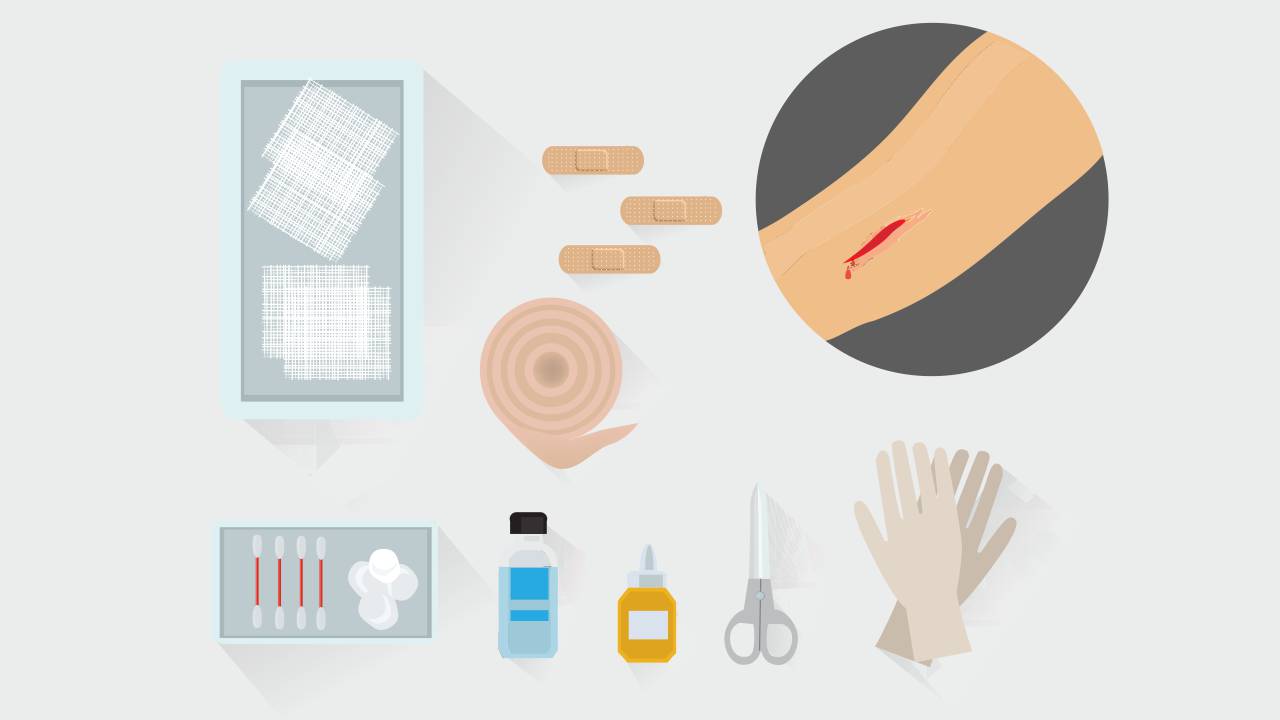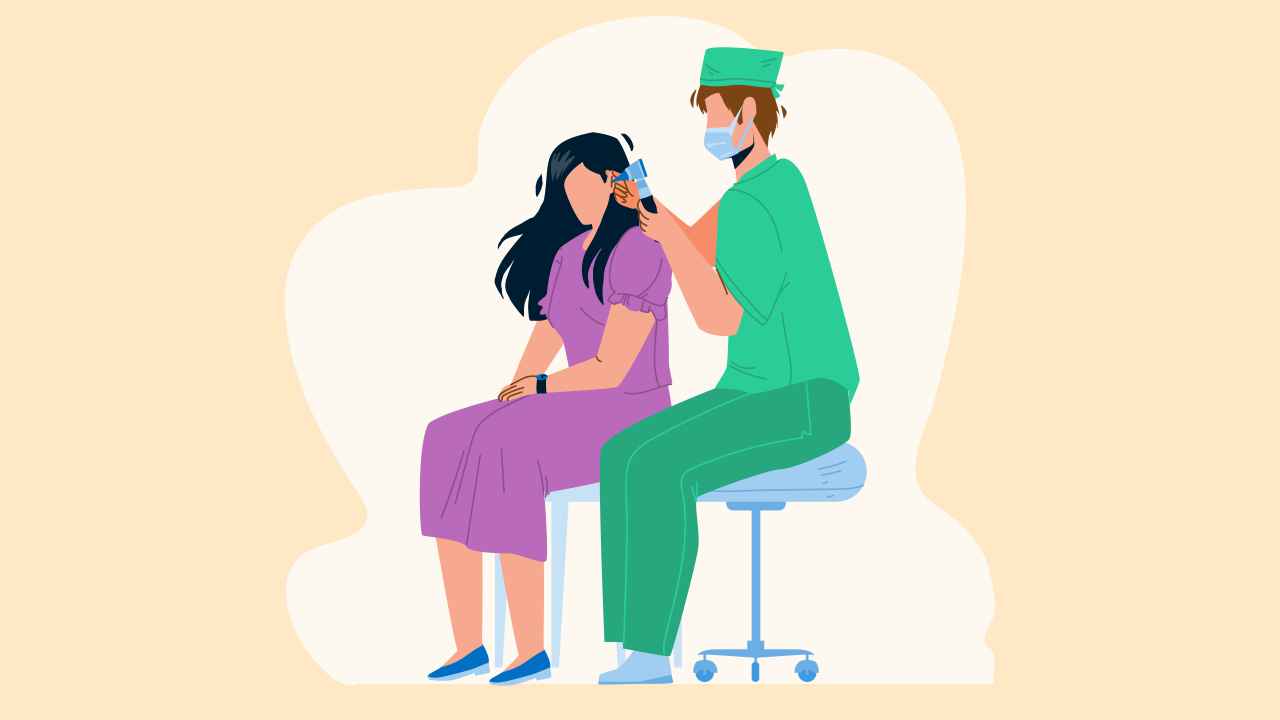
Open Wounds and How to Care for Them

Bruises and cuts are common childhood injuries. Even grownups suffer from cuts and abrasions, which can happen during any activity such as cooking, sewing, gardening, or driving. If the injury is small, you may ignore it. But some wounds need proper care and treatment. So, it’s important to know about different types of wounds, so that you ensure proper treatment.
Types of wounds
A wound occurs when an injury causes tissue damage. Broadly speaking, wounds are of two types:
Closed wound: An injury, which leads to damaged tissue and bleeding, but no break in the skin.
Open wound: An injury resulting from a fall, trauma, or surgery that causes the skin to break and leaves the internal tissue exposed to the environment. Open wounds can be further classified into five types:
| Abrasion | Occurs when the skin rubs or scrapes on a rough surface like in a road rash. Bleeding is less, but the wound is painful because the outer skin layers have a high number of pain sensitive nerve endings |
| Laceration | Occurs when there is a deep opening or tear in the skin caused by an accident or a sharp object such as a knife or machinery, which causes profuse bleeding.Stitches are required to close the wound |
| Avulsion | Occurs when the skin and underlying tissues are forcibly torn away. Avulsions result from violent incidents such as car crash, animal attack, etc causing rapid and heavy bleeding |
| Puncture | Occurs when there is a small hole in the soft tissue.Small punctures from splinters and needles affect the outer layer of the skin, which does not cause profuse bleeding. Deep punctures from a knife stab or a gunshot can damage muscles and internal organs causing profuse bleeding |
| Incision | Occurs when there is clean, straight cut in the skin by knives, razors, and other sharp objects, and causes rapid and heavy bleeding. Several surgical procedures also require incisions.Deep incisions damage muscles and nerves and may need stitches to heal |
Home remedies for open wounds
Minor open wounds do not require medical treatment. Home remedies work as long as you follow a proper process.
Wash your hands
Before treating the wound, wash your hands with soap and water to avoid the chance of infections. Infections can be transmitted from dirty hands to the wound and vice-versa. If possible, wear gloves. Gloves protect the wound from getting infected by bacteria from hands as well as prevent transmission of infections like HIV and hepatitis B, which get transmitted via blood and body fluids.
Also read: Washing Hands: When and How to Do It Right
Stop the bleeding and elevate the affected area
Gently apply pressure using a cloth or a bandage or elevate the wounded area to help blood clotting. Elevating the wounded area above the level of the heart may aid in preventing blood loss and reducing swelling in case of severe injuries, especially those involving blood vessels. For example, in case of head injury, keep the head and shoulders slightly raised, and in case of a leg injury, raise the leg slightly above the level of the chest with the help of a pillow kept under the leg.
Clean the wound
Use clean water and saline solution to clean any bacteria and debris. Pat the wound dry with a clean cloth.
If your wound contains foreign objects such as glass pieces, bullets, stones, or even dead tissue, immediately see a doctor for debridement (a procedure for treating a wound in the skin). Do not try to pull out foreign objects on your own if they are deeply embedded in the tissue. This may cause blood vessel rupture and lead to more damage and blood loss.
Treat with antibiotics
Apply a thin layer of topical antibiotics on the wound to prevent infection.
Dress the wound
Close the wound with a waterproof bandage or gauze. Deep wounds may require stitches. Closing the wound helps in faster healing. Very minor wounds can heal without a dressing. Beware of wounds caused by animal bites. Keep the wounds lightly covered or open to the air in case of canine bites.
Change the dressing
The US Centers for Disease Control and Prevention (CDC) recommends changing the dressing every 24 hours to check for infection. Make sure you clean the wound and dry it before re-dressing it.
Medication
In case of severe pain, you can take over-the-counter painkillers. Do not consume aspirin because it can cause bleeding.
Tetanus shots are a must when the wound is sharp and deep. However, a small cut by a sharp metal object may also require a shot. Do consult a doctor to know if you need the shot. If you have already taken a booster dose, you are safe. The tetanus booster dose should be taken once every 10 years.
Treat the swelling
If you have swelling or a bruise, apply ice to reduce the swelling.
Do not pick the scabs
You should not pick scabs because it may cause infection or scarring.
When can open wounds lead to complications?
Infection
The main concern is development of an infection, so it is important that you consult your doctor immediately if you have deep lacerations, punctures, or are experiencing the following:
- Profuse bleeding
- Fever
- Tender lump in the groin or armpit
- Thick, green yellow, or brown pus
- Pus with foul odor
- Delayed wound healing
Lockjaw
You may suffer from tetanus infection caused by the bacteria Clostridium tetani and develop a condition, where your muscles contract in the jaws and the neck. If you have a deep or sharp cut, see a doctor immediately.
Necrotizing fasciitis
You may suffer from a soft tissue infection caused by a bacteria species of Clostridium or Streptococcus that may lead to sepsis, toxic shock syndrome, and even death.
Hemorrhage
Hemorrhage is leakage of blood caused by a blood vessel rupture. When the bleeding does not stop even after applying pressure for more than 20 minutes, it could be a sign of hemorrhage.
Chronic wound
Underlying health conditions such as diabetes or cancer, or a weak immune system may delay healing of a wound.
Usually, open wounds are minor injuries and don’t cause much harm. That said, it is important to keep away bacterial infections. Following a wound hygiene regime will keep germs at bay and heal the wound. But if there are any signs of infection, delay in healing, or excessive bleeding, consult a doctor immediately.
References
1. Gonzalez A, Costa T, Andrade Z, et al. Wound healing – A literature review. Anais Brasileiros de Dermatologia 2016; 91: 614–20.
2. Alhashim M, Lombardo J. Mechanism of Action of Topical Garlic on Wound Healing. Dermatologic Surgery: Official Publication of American Society of Dermatologic Surgery [et al] 2018; 44: 630–4.
3. Lone PA, Ahmed SW, Prasad V, et al. Role of turmeric in management of alveolar osteitis (dry socket): A randomised clinical study. J Oral Biol Craniofac Res 2018; 8: 44–7.
4. Hekmatpou D, Mehrabi F, Rahzani K, et al. The Effect of Aloe Vera Clinical Trials on Prevention and Healing of Skin Wound: A Systematic Review. Iran J Med Sci 2019; 44: 1–9.
5. Dorai AA. Wound care with traditional, complementary and alternative medicine. Indian J Plast Surg 2012; 45: 418–24.
6. Roddick J. What is an open wound? Healthline. https://www.healthline.com/health/open-wound (accessed Mar 30, 2021).
7. Eske J. What to know about open wound care. Medical News Today. https://www.medicalnewstoday.com/articles/325260 (accessed Mar 30, 2021).
8. Cuts and scrapes: First aid. MayoClinic. https://www.mayoclinic.org/first-aid/first-aid-cuts/basics/art-20056711 (accessed Mar 30, 2021).
9. Emergency Wound Care After a Natural Disaster. Centers for Disease Control and Prevention. https://www.cdc.gov/disasters/hurricanes/pdf/woundcare (accessed Mar 30, 2021).
10. Td (Tetanus, Diphtheria) Vaccine: What You Need to Know You ( Tetanus , Diphtheria ) Vaccine. Centers for Disease Control and Prevention. https://www.cdc.gov/vaccines/hcp/vis/vis-statements/td.pdf. (accessed Apr 19, 2021).














